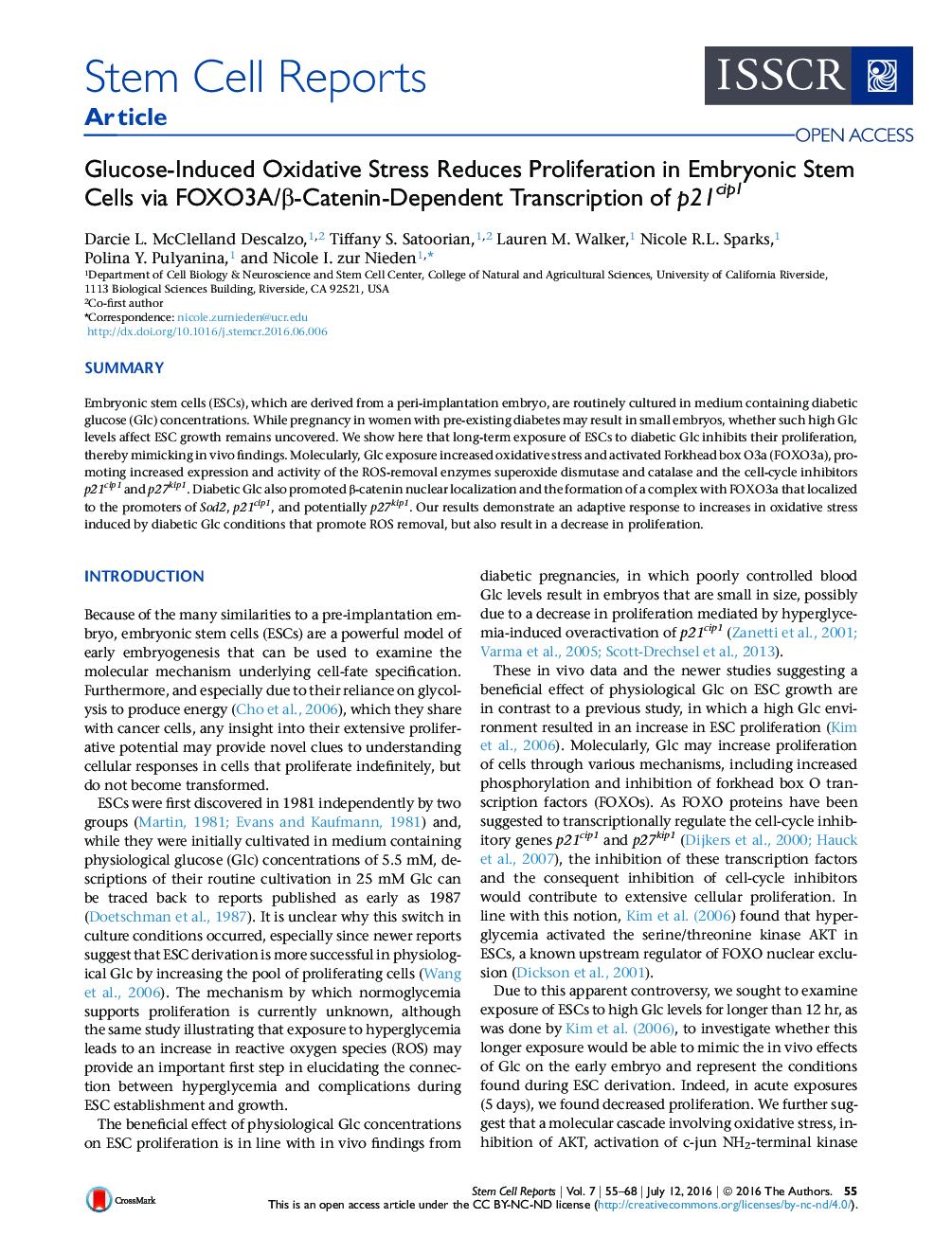| Article ID | Journal | Published Year | Pages | File Type |
|---|---|---|---|---|
| 2093242 | Stem Cell Reports | 2016 | 14 Pages |
•Exposure of ESCs to diabetic glucose (Glc) induces oxidative stress•ESCs fight oxidative stress via FOXO3a-mediated transcription of Sod2•FOXO3a activation promotes p21cip1 and p27kip1 expression and cell-cycle inhibition•Glc regulates FOXO3a/β-catenin co-occupation of the p21 and Sod2 promoters
SummaryEmbryonic stem cells (ESCs), which are derived from a peri-implantation embryo, are routinely cultured in medium containing diabetic glucose (Glc) concentrations. While pregnancy in women with pre-existing diabetes may result in small embryos, whether such high Glc levels affect ESC growth remains uncovered. We show here that long-term exposure of ESCs to diabetic Glc inhibits their proliferation, thereby mimicking in vivo findings. Molecularly, Glc exposure increased oxidative stress and activated Forkhead box O3a (FOXO3a), promoting increased expression and activity of the ROS-removal enzymes superoxide dismutase and catalase and the cell-cycle inhibitors p21cip1 and p27kip1. Diabetic Glc also promoted β-catenin nuclear localization and the formation of a complex with FOXO3a that localized to the promoters of Sod2, p21cip1, and potentially p27kip1. Our results demonstrate an adaptive response to increases in oxidative stress induced by diabetic Glc conditions that promote ROS removal, but also result in a decrease in proliferation.
Graphical AbstractFigure optionsDownload full-size imageDownload as PowerPoint slide
